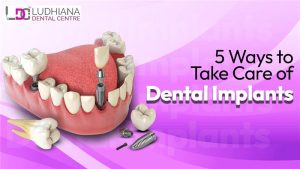Dental Bonding
Dental bonding for cracked tooth correction and filling
The materials used for tooth bonding are resin similar to tooth color, adhesive and high intensity healing light. The procedure is usually followed for improving facial appearance by correcting the broken or discolored tooth. The procedure is also helpful in filling spaces among teeth by extending them, changing their shape and color. The bonding is also required to secure the tooth root that is exposed after the gum loss.
Significance of teeth bonding
- Repair tooth loss
- Fix chipped/ cracked teeth
- Improve the appearance of discolored tooth
- Fill spaces among teeth
- Increase the length of teeth
- Improve teeth shape
- Cosmetic advantage of amalgam filling
- Secure the root of tooth after the gum lose

Process of dental bonding
Dental bonding is performed under anesthesia to fill decayed tooth whilst for the other purposes, anesthesia is not needed. Your dentist will get the shape of your teeth to choose the composite color that resembles to your tooth color.
The dental bonding is performed in the following forms:
- Direct composite bonding: In this procedure the composites of tooth color are used to fill the tooth loss, correct chips, fill gaps between teeth and develop the worn edges. The composite materials are used to apply and sculpt the teeth surfaces that improve your smile.
- Adhesive bonding: In this procedure, the restoration material is attached with the tooth. It is fit for aesthetic crowns, porcelain veneers, bridges etc. Once the tooth color is select, the tooth surface is roughened to apply a bonding material. A putty like resin is applied that is molded and flattened in the required shape. Then the applied material is hardened under ultraviolet light. The process is performed again and again to receive the final shape. It will be then polished to offer the indistinguishable surface.

TYPES OF DENTAL BONDING
Direct composite bonding
In this dental bonding, dentist usually use the tooth colored composites and used to fix the issues like chipped/cracked teeth, gap between the teeth, protecting the teeth root. Composite material is directly applied or sculpted to the different surface of the teeth. Direct composite bonding is the less costly procedure. Direct composite bonding usually requires the only one dental visit.
Adhesive bonding
Adhesive bonding are mostly recommended for porcelain veneers, esthetic and metal-free crowns, bridges and inlays/Onlays. Adhesive bonding uses the bonding agent in order to attach the restoration to the tooth. Bonding agent is usually the high intensity curing light.
How Adhesive bonding treatment started?
- In the first step, your dentist will match the color of your tooth and select the shade that matches with your shade.
- Then your dentist will use the gentle phosphoric solution in order to rough the surface of the tooth.
- In the third step, Liquid bonding agent is used.
- After this, your dentist will apply the tooth colored resin. Your dentist will also mold the tooth in the desired shape. This gives the smoother layer.
- In the last, dentist will polish your tooth.
Who is right candidate for Dental bonding? When will Dental Bonding be recommended by your dentist?
- When there is need to fill cavities with Composite resins.
- When there is requirement to repair the crack, chipped and decayed tooth.
- When your surgeon needs to fill spaces between the teeth,
- When it become obligation to align the teeth.
- Dental Bonding is cosmetic substitute of the amalgam fittings.
- Dental Bonding is the good option to improve the appearance of the discolored teeth or stained teeth.
- When it become the compulsion to protect the roots of the teeth due to the gum recession.

Benefits of dental bonding
It is a common dental procedure that is performed within a few visits, also the teeth bonding price in India is very low. It needs slight or no tooth enamel and doesn’t need to anesthesia in the general treatment
Disadvantages
The material applied is not as firm as natural teeth so you should avoid biting nails and hard things like chewing pens. It lasts a couple of years and need repair because of use of less strong materials unlike to those used in crows and veneers.
Due to a few drawbacks of teeth bonding, it is recommended for nominal cosmetic enhancement purposes such as for temporary repair of teeth and correction in areas with small bite pressure for its lowest tooth bonding cost for one gap. So you can choose it for temporary improvements
Care needed
You should take care of your bonded teeth to increase their life. Care is also needed to maintain your improved smile.
Latest Posts

Importance Of Dental Care During Pregnancy
Pregnancy affects the whole body in various ways. Changes in hormonal levels do impact the body parts. Talking about teeth, it comes under the oral

Four Bad Habits To Avoid For Better Oral Health
One becomes a careless and ignorant person in terms of maintaining their teeth and gums as they grow up. Neglecting the maintenance of dental health

5 Ways to Take Care of Dental Implants
Installing dental implants can let your smile have a revival. With the help of dental implants not only can you make sure that you are

Prevent Yourself From Serious Health Problems Through Better Oral Care
Good oral health plays a crucial role in maintaining one’s overall well-being. Some individuals might be surprised after learning about interesting research saying that oral

5 Effective Ways of Taking Care of Your Teeth
Oral hygiene often gets neglected in our day-to-day lives. One needs to make sure that you are able to pay attention to the state of

Explore Major Benefits of Teeth Whitening
Having yellow teeth can bring a lot of embarrassment and shame to one’s life. There are various reasons that are responsible for turning the teeth
